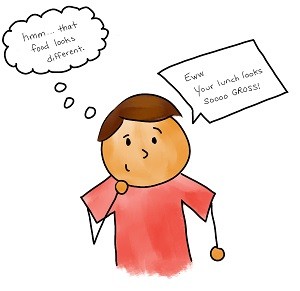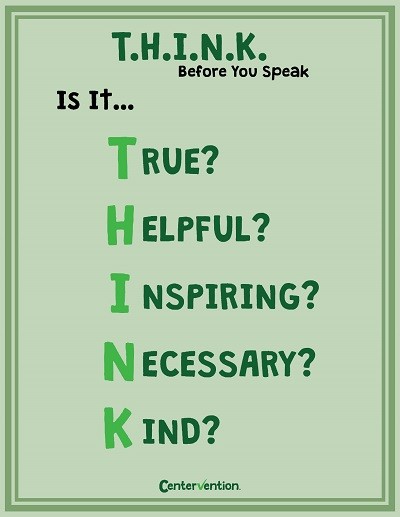
To be honest, it can be hysterical to hear a child say something they shouldn’t. A child pointing out a pimple may not bother you, but they can be damaging when said between students. So when you start hearing your students say something that hurts someone else’s feelings, it may be time to explain “think before you speak.”
One of the trickiest nuances of learning to think before you speak is knowing if a statement is helpful. Even adults have trouble recognizing that just because something is kind or neutral, doesn’t mean it’s the right thing to say.
To help we have created worksheets for students in early elementary, upper elementary, and in middle school. Please feel free to use these PDFs in your Google Classroom or other virtual learning environment.
Recommended Grade Level: Elementary and Middle
SEL Skill(s): Communication, Emotion Regulation
Duration: 30 minutes
Materials: Worksheet for Early Elementary, Upper Elementary, or Middle School (sheet one, sheet two)
Think Before You Speak Worksheet: Early Elementary
In this lesson, we’ll focus on modeling what we should think in our head and what we can say out loud, and we include a Think Before You Speak Poster (letter size, legal size) for your classroom as a daily reminder. Note: You can also use this poster in your virtual classroom.
Prompt: “Sometimes we say things without thinking them through, and our words may not be appropriate. They may hurt someone’s feelings, or it may not be the right time to talk. Learning to think before we speak is important, not only because you are responsible for the things you say but also you’re responsible if those things you say hurt someone else. Today we’re going to review some words and decide if they should stay in our head or if it is okay to say them outloud.”
Read the directions on the worksheet and do one together.
* Allow students to complete the worksheet *
After students complete the worksheet, continue the lesson by hanging the THINK Before You Speak poster somewhere in the room.
Prompt: “This poster will help us remember to think about something before we say it out loud. Let’s go through this together.”

Think Before You Speak Worksheet: Upper Elementary
In this activity, students will practice filtering thoughts, deciding whether they should keep the thought to themselves, or say it out loud by sorting statements into the “Think it” or “Say it” columns.
After students complete the activity, discuss with them why the “think it” statements may hurt others’ feelings. To add to this activity, consider having students rewrite the statements in that column in a way that would make them okay to say out loud!
Think Before You Speak Worksheets: Middle School
In these worksheets, your students will consider whether their statements will be:
- Kind
- Hurtful
- Helpful
- Not helpful
Being kind means being considerate of others feelings, showing them you care. A hurtful statement is one that is mean or hurts someone’s feelings. A statement that is helpful provides assistance, serves to meet a need, or is useful in achieving a goal. Just because something is kind or not hurtful, doesn’t mean it’s helpful or the right thing to say. And just because something’s not helpful, doesn’t make it hurtful.
Students will cut out the cards on the dotted lines. Then, they’ll read the situation and statement on each card, sorting the cards into four piles based on whether they think that statement is helpful, hurtful, not helpful, or kind for that situation. We have create two complete versions of the lesson, and you may want to use one or both with your students depending on their mastery of the subject.
Additional Resources
Books
- I Can’t Believe You Said That! by Julia Cook and Kelsey De Weerd
- What Were You Thinking? by Bryan Smith
- My Mouth Is A Volcano by Julia Cook
- Me and My Feelings: A Kids’ Guide to Understanding and Expressing Themselves by Vanessa Green Allen
Related Lessons and Programs
- Following Directions at Home
- Stories in Motion (Students with high SEL needs)
- Think Sheet – Behavior Reflection